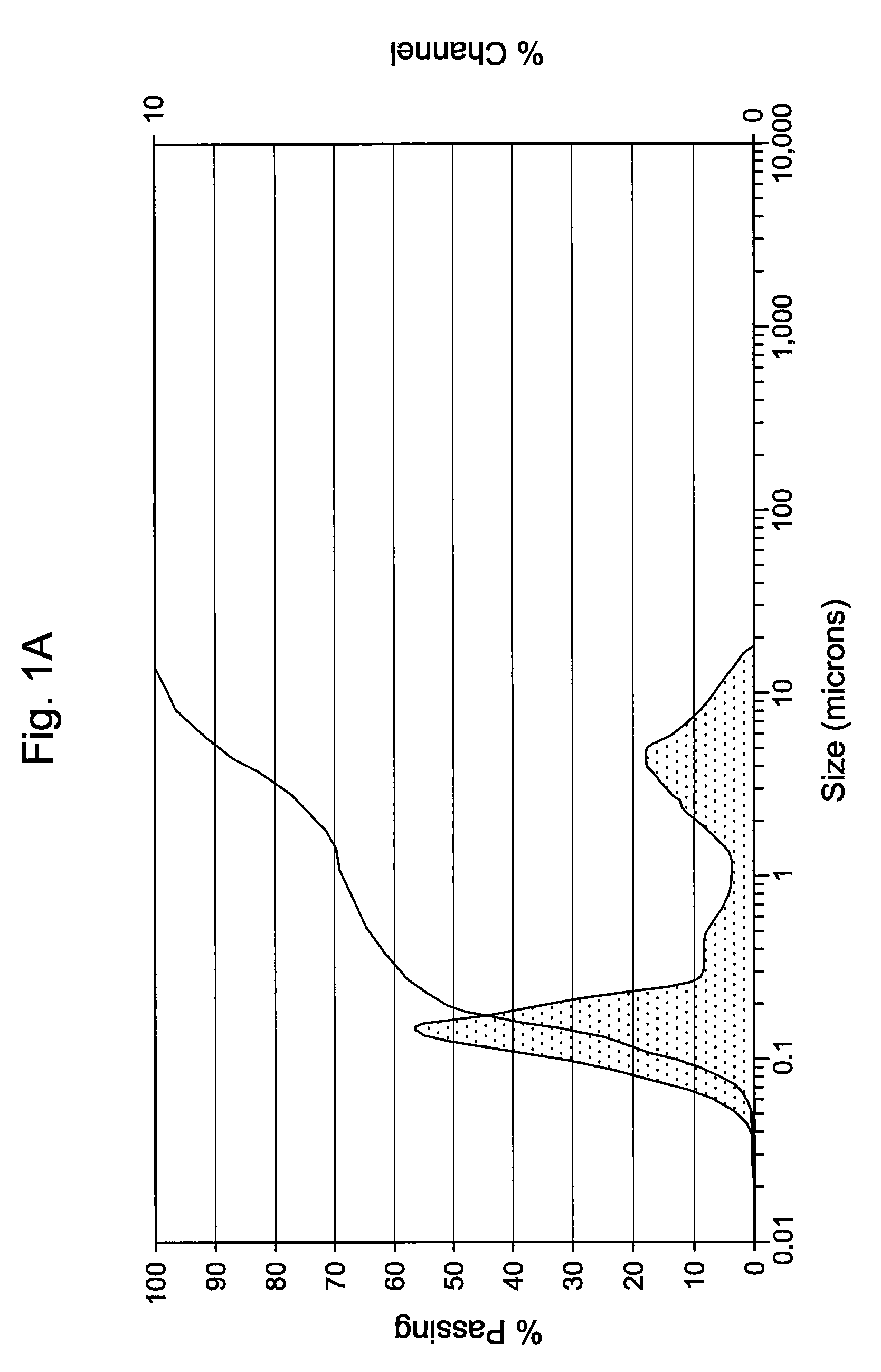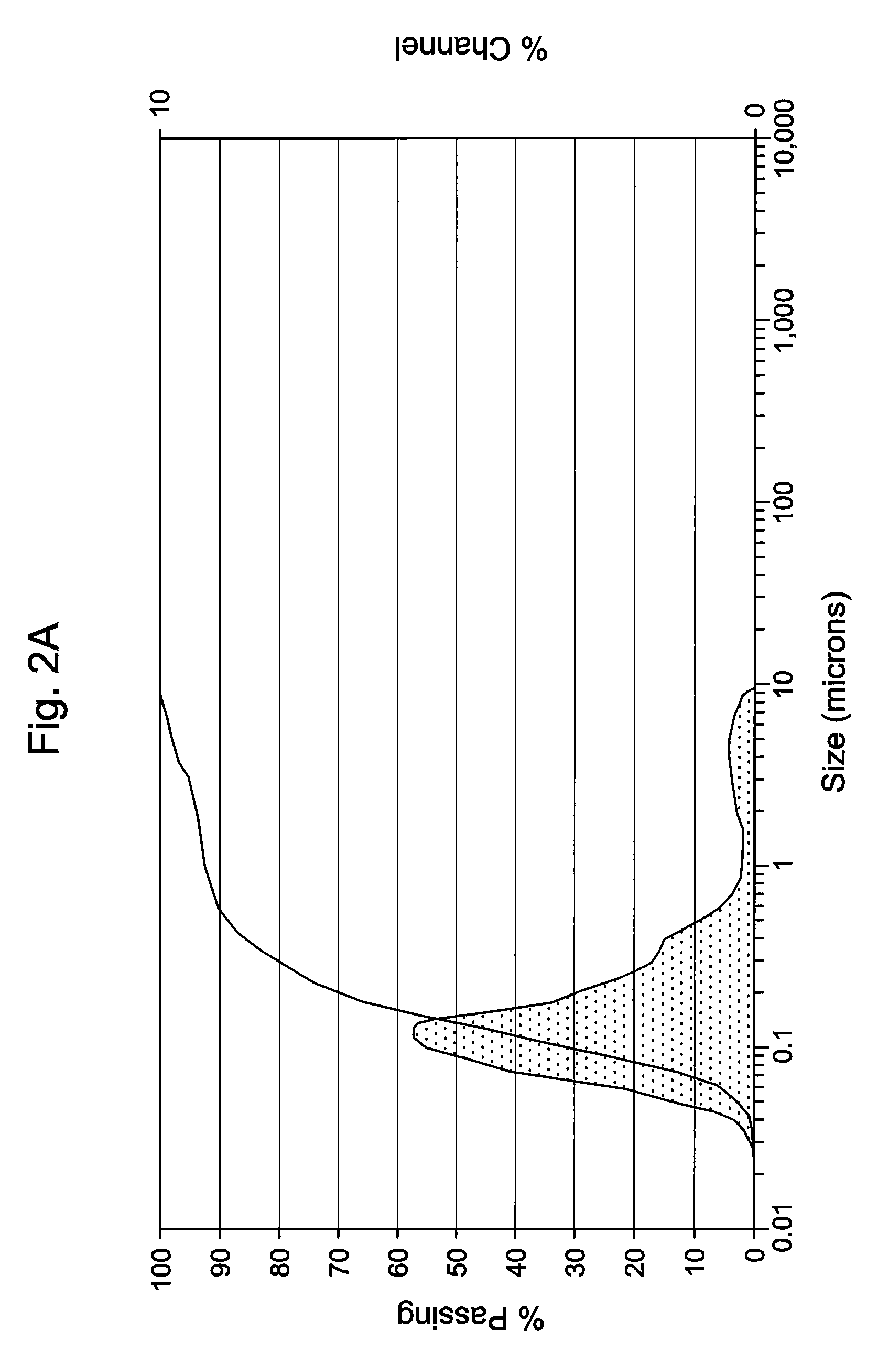Self-preserved emulsions
a self-preserved, emulsion technology, applied in the field of emulsions, can solve the problems of insufficient soluble emulsion in aqueous vehicle, limited use of emulsions, and emulsions are also typically unstable, and achieve the effect of non-irritating the eye and being comfortabl
- Summary
- Abstract
- Description
- Claims
- Application Information
AI Technical Summary
Benefits of technology
Problems solved by technology
Method used
Image
Examples
example 1
[0045]A representative sterile compounding procedure for preparing emulsions containing compounds of Formula (I), shown in Table 1A, is described as follows:
1. Hydrate the compound of Formula (I) and HCO-40 (Polyoxy)-40 Hydrogenated Castor Oil) in purified water (50% of total batch size) and filter through a 0.2 μm filtering unit.
2. Combine Boric Acid and Sorbitol in 25% purified water, stir until homogeneous and filter through a 0.2 μm filtering unit.
3. Transfer content from step 1 to a beaker that will at least hold twice as much volume as total batch weight, filter Oil into the beaker using a 0.2 μm syringe filter and stir vigorously for 1 hour.
4. Add content from step 2 to content from step 3, qs to 95% with purified water and stir vigorously for 1 hour.
7. Using 20% Tris Stock Solution (S / S), adjust the pH accordingly.
8. Qs to 100% and continue to stir vigorously for ˜20 hours.
When adding a drug or therapeutic agent, combine with Oil and sonicate until homogeneous before filteri...
example 2
[0046]The antimicrobial activity and stability of the formulations shown in Table 1A below, which contain either 0.1 or 0.2 (w / v %) of Compound 1 were evaluated. Table 1A also contains an emulsion formulation (Formulation C) consisting of Cyclosporin and Compound 1. Table 1B constitutes overall standard preservative efficacy test (PET Screen International) results along with the results of a visual assessment of physical stability of the emulsions. The data indicates that all the formulations passed global PET standards and the emulsions are stable. Histograms for Formulation B, showing the initial particle size measurements as well as 60 weeks, can be seen in FIGS. 1A & 1B. Similarly, histograms for Formulation C, containing 0.05% Cyclosporin, showing the initial particle size measurements as well as at 62 weeks, can be seen in FIGS. 2A & 2B. It is clear from the histograms that no significant change of the emulsion particle size took place over an extended period of storage, indic...
example 3
[0047]The stability and antimicrobial activity of the formulations shown in Table 2A below, which contain either 0.1, 0.2 (w / v %) of Compound 1, or have no added compound of Formula (I), were evaluated. The results, shown in Table 2B below, demonstrate the is stabilizing effect of adding the compound of Formula (I) to the emulsions.
TABLE 2AFORMULATION COMPOSITIONSFORMULATIONABEINGREDIENTSConcentration (w / v %)Compound 10.20.1NoneSorbitol0.330.330.33Boric Acid111HCO-400.50.50.5Corn Oil0.750.750.7520% Tris S / S*Adjust pH 7.2Adjust pH 7.2Adjust pH 7.2Purified WaterQs to 100%Qs to 100%Qs to 100%*S / S = Stock Solution
TABLE 2BPHYSICAL PARAMETERSFORMULATIONABEFinal pH7.27.27.2PET ScreenPASS EPAaPASS EPAaN / AVisualNo visibleMinimal separationVery milky andStabilityseparation after 11after 11 days atcreamy. Upondays at 40° C. and40° C. and 50° C.,allowing to sit50° C. No visiblecleared uponovernight thereseparation at RTinverting once. Nowasfor 60 weeks.visible separationsignificantat RT for 60 ...
PUM
| Property | Measurement | Unit |
|---|---|---|
| Fraction | aaaaa | aaaaa |
| Temperature | aaaaa | aaaaa |
| Temperature | aaaaa | aaaaa |
Abstract
Description
Claims
Application Information
 Login to View More
Login to View More - R&D
- Intellectual Property
- Life Sciences
- Materials
- Tech Scout
- Unparalleled Data Quality
- Higher Quality Content
- 60% Fewer Hallucinations
Browse by: Latest US Patents, China's latest patents, Technical Efficacy Thesaurus, Application Domain, Technology Topic, Popular Technical Reports.
© 2025 PatSnap. All rights reserved.Legal|Privacy policy|Modern Slavery Act Transparency Statement|Sitemap|About US| Contact US: help@patsnap.com



